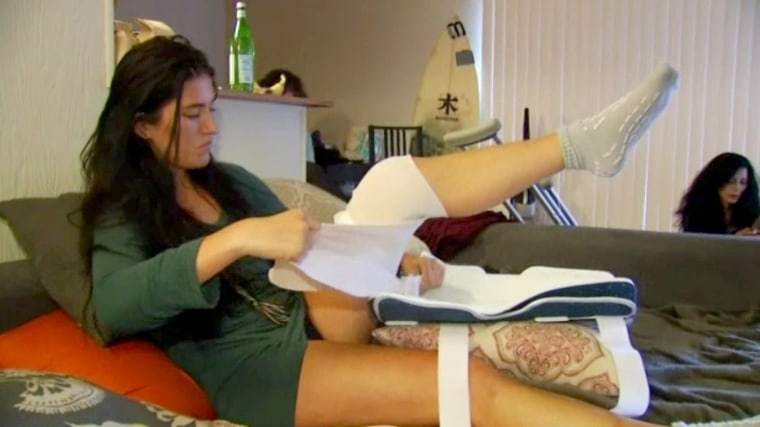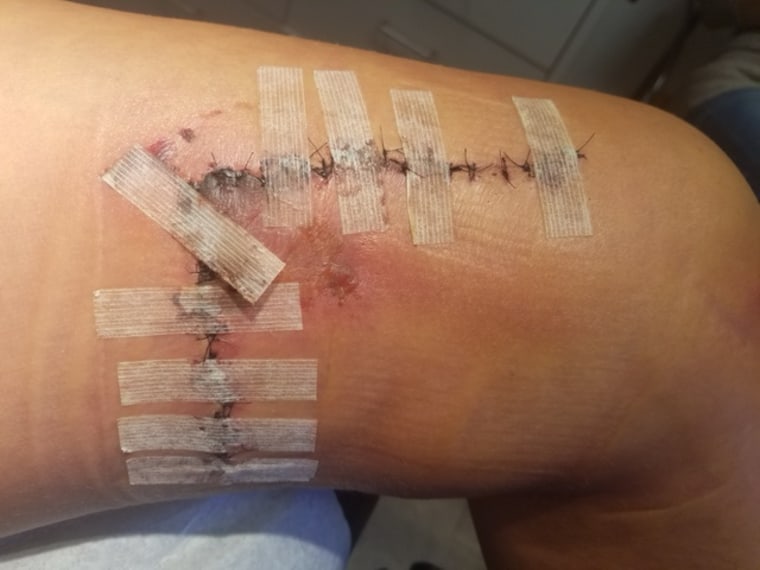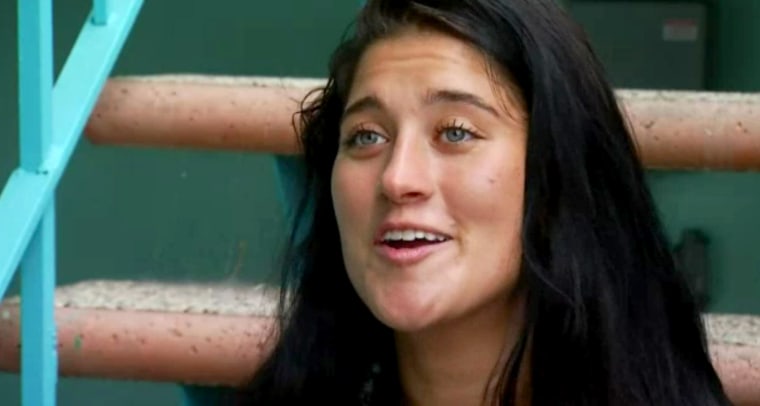LOS ANGELES — The reports seem to arrive every day or two in Southern California: an 11-foot shark swimming under the San Clemente Pier. Three 8- to 10-footers pictured lolling just outside the surf at Capistrano Beach. And meaty sharks, possibly great whites, captured on video leaping into the air beside popular San Diego County surf breaks.

Those sightings could not be ignored after what happened on the last weekend in April at San Onofre State Beach. A 36-year-old mother of three was swimming with her surfer boyfriend when a shark dragged her beneath the surface, tearing a huge hunk out of one of her legs and almost killing her.
"It’s officially shark week in Southern California," Surfline.com declared. The popular website described what it called "a collective sense of heightened alarm."
The region’s sharky spring certainly has grabbed attention. But what seems to have disturbed locals more than the news of carnivores in their midst was another reported shark attack, just four days after the one that nearly killed Leeanne Ericson. But many surfers and ocean experts insist the attack didn't happen. Their furious reactions exploded on sites like Surfline, which asked if the May 3 incident was more likely "a classic case of the girl who cried shark."

After the April 29 attack that nearly killed Ericson, it was no wonder that stories about a possible followup incident set the surf world to buzzing. A half dozen L.A. TV stations reported how Sophia Raab, 18, had just finished a surf session in Pacific Palisades, west of Los Angeles, when, in waist-deep water, she felt "a sudden burst of pain" in her leg.
"I had no idea what happened — just that it was the most painful experience of my life," the Santa Monica College student later wrote online. She said she never saw a shark. Neither did the bystanders or lifeguards who helped her to shore, and then to an ambulance.
"I am not trying to antagonize anyone or make it seem like surfing is more dangerous than it really is."
But an orthopedic surgeon and self-described shark aficionado and "advocate" who treated Raab during a follow-up appointment a few days later said he became convinced that Raab had been bitten by a shark. Dr. Bert Mandelbaum, a scuba diver and surfer, drew his conclusion, in part, by examining photos of other shark attack victims. "It's a shark bite by a great white or a mako," Mandelbaum told NBC4 in Los Angeles.
After receiving treatment from Mandelbaum, Raab created a Gofundme.com page, asking for up to $15,000 in donations. She explained that "going from doctor to doctor along with the bills from the E.R., it seems like I will not be able to afford the proper care necessary to recover from the attack." She titled the financial appeal "Shark Bite Sophia."
Regulars on Surfline responded with waves of skepticism. No one had seen a shark at the crowded surf spot, they noted. And pictures of Raab’s sutured leg showed an almost perfectly straight wound, bending in the middle at a 90-degree angle. There appeared to be no signs of punctures or adjacent trauma, the skeptics noted.

Among the dozens posting about the episode was a user named "Kelly Slater." The note drew special attention because not only is Slater a local resident, but he is considered by many to be pro surfing’s all-time greatest champion. (Surfline’s operators said Slater is a regular on their site and they believe he posted the comment on Raab.)
"Could this perhaps be a fin cut?" Slater asked, referring to a relatively common injury where surfers are cut by the skegs, or bottom fins, that help turn their boards. "No teeth marks and her fin is missing from her board. Wouldn’t there be teeth marks from the other jaw somewhere and some ragged slices?"
Similar questions about the suspected attack were also raised by Ralph Collier, founder of the Shark Research Committee and a leading authority on man-shark encounters. Collier told NBC News that Raab’s stitched-up leg had none of the attributes he has seen over half a century examining photos of shark bites, which typically leave crescent-shaped wounds, formed by a series of punctures.
"This was a straight line meeting another straight line at a 90-degree angle," Collier said, also noting that the fin off the bottom of Raab’s board was missing. He said he would like to get more detail about the incident and the teenager’s injury but already believes "that is not a shark."
Despite Raab’s youth and her doctor’s opinion that she had been bitten, many of those commenting online were less than merciful. "She is looking for 15 minutes of fame," said one. "She is just an unfortunate victim of her surfboard fin. People want to be dramatic and get attention in this world. What a shame."
Another writer speculated that the victim initially believed she had suffered a shark bite and when that became less clear she "just was too scared or embarrassed to stop it right then," adding: "Kids make mistakes."
But Raab also had her defenders, including one woman who called the online critics "heartless," adding, "This is a real injury that happened to a real person, who is simply reciting what her doctor told her happened. If you disagree with her doctor, take it up with him but don't tell an 18-year-old injured girl she's scamming people."
The teenager struck a similar note in an interview with NBC News. She said her critics didn’t know the full story and that she had been told that the break in her surfboard’s fin looked to some who had examined it like the work of a shark.
"I am not trying to antagonize anyone or make it seem like surfing is more dangerous than it really is," Raab said. "I am just trying to recover… I don’t feel there is a reason for the nasty and derogatory messages I am getting."
Raab acknowledged that, after the fierce blowback, she reduced her Gofundme.com request from $15,000 to $10,000. She said she made the change because she was "pressured by the negativity, people saying I was trying to raise money for personal use, which was far from the truth."
Mandelbaum said he considers all the discussion about the cause of Raab’s injury overblown. The doctor said he still believes it is "an odds on probability" that his patient suffered a shark bite. He said the diagnosis was the conservative one to make medically, because he wanted to make sure he treated the surfer for any possible infection. He said the important thing now is that Raab recover, which he said she appears to be doing nicely.
The teenager said it will be difficult to stay out of the water for two months, as she has been ordered. "I am not going to give up and kind of fall into a pit of despair," Raab said. "I am going to pull through."
Experts have not offered a clear explanation for the spate of shark encounters in Southern California. Populations of great white sharks are believed to be rebounding, since protections were placed on the creatures in recent years. But no one has an authoritative count on the number of great whites in local waters.
The number of attacks along the Pacific Coast has increased. In the entire 20th century, through 1999, there were 108 confirmed incidents from the state of Washington to the Mexican border, said Collier of the Shark Research Committee. In the first 17 years of the new millennium, there already have been 95 attacks.
"Our problem right now really relates to population dynamics," said Collier. "You have a very large increase in surfers, swimmers, divers and kayakers. And you therefore increase the chance for an interaction between a shark and a person... We are inserting ourselves into that ecosystem and so now we put ourselves in danger."
In western Australia, the April death of a 17-year-old girl who had been surfing near Wylie Bay renewed a long-running debate about whether the government should move beyond nets and other safety measures and begin "culling" the shark population. Most surfers around Southern California reject such kill-offs as violating their sport's ethos; they are merely merely guests in an alien environment, which must be preserved.
Dashel Pierson, the Surfline news editor who has covered the recent swell in shark incidents, said at least a few surfers are for a more aggressive counterattack. But they remain a minority. Surfers seem almost unanimous in another sense, Pierson said. "Just about anyone you speak to will tell you this is not preventing them from paddling out."
